11 Spring Lawn Care Tips for Durham Homeowners
BY JUDITH GALLOVA | APRIL 6TH, 2023 | DURHAM, LAWN CARE, NORTH CAROLINAWhen spring arrives in Durham, you may be thinking about visiting a park or going on a hike to explore the city’s breathtaking nature. But if you want your lawn to be breathtaking as well, you need to put in the time early and know what you’re doing.
We’ve got you covered. Here are 11 tips for caring for your Durham lawn.
In this article:
- Equipment
- Cleaning Up Yard Debris
- Soil Testing
- Preventing Lawn Diseases
- Preventing Weeds
- Core Aeration
- Fertilization
- Overseeding
- Mowing
- Preventing Insects
- Watering
- How to Keep Your Durham Lawn Beautiful
1. Get Your Equipment Ready
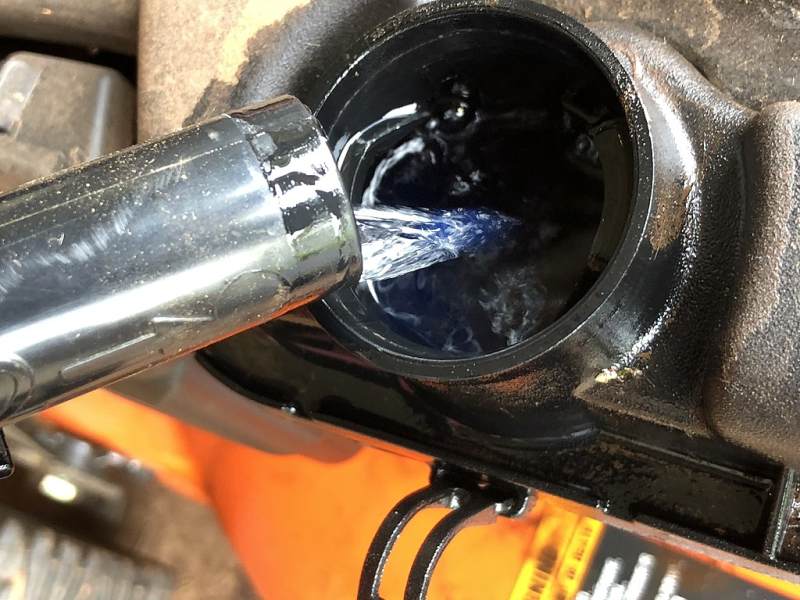
Photo Credit: Famartin / Wikimedia Commons / CC BY-SA 4.0
Your lawn equipment needs to function well. Hopefully, you did a little maintenance before storing it for the winter. As spring emerges, you’ll want to take it out and make sure it’s still in good working order.
Each of your pieces of lawn equipment should come with a manual that outlines the specific jobs you need to do and how often to do them.
But to give you a rough idea of the lawn mower maintenance that will be needed, we’ve put together lists of common lawn mower maintenance tasks.
Here are typical maintenance jobs for a gas lawn mower (these may not apply to your machine; check your manual for specific instructions):
| Gas Lawn Mower Maintenance Job | Estimated Job Frequency (varies based on type) |
| Engine oil change | Either every 20 to 50 hours or once per season, whichever is first; after roughly the first 5 hours for new lawn mowers |
| Fuel change | Fuel goes bad within 30 days unless you add stabilizer |
| Sharpening and balancing | Every 20 to 25 hours of use time |
| Spark plug replacement | Once a season or every 25 hours of use time, whichever is first |
| Cleaning air fillers | At least every 10 uses, possibly more depending on your environment |
| Changing air fillers | Every month to every year, depending on your environment and usage |
| Lubricating the wheels | Once a month to twice every season, depending on usage |
Here are typical maintenance jobs for a battery lawn mower (once again, these may not apply to your machine; check your manual for specific instructions):
| Battery Lawn Mower Maintenance Job | Estimated Job Frequency (varies based on type) |
| Battery change | Between 3 and 5 years |
| Sharpen lawn mower blades and balance them | Every 20 to 25 hours of use time or twice per season, whichever is first |
| Cleaning the vents | As needed, depending on usage |
| Lubricating the wheels | Once a month to twice per season, depending on usage |
As you can see, there are a number of tasks you may need to do as part of your seasonal maintenance, and these are just for your lawn mower. On top of these, you also need to maintain your edger, your leaf blower, and your hedge trimmer, if you have them.
It may make things easier to get a professional tune-up to make sure all your equipment is functioning properly.
2. Clean Up Yard Debris
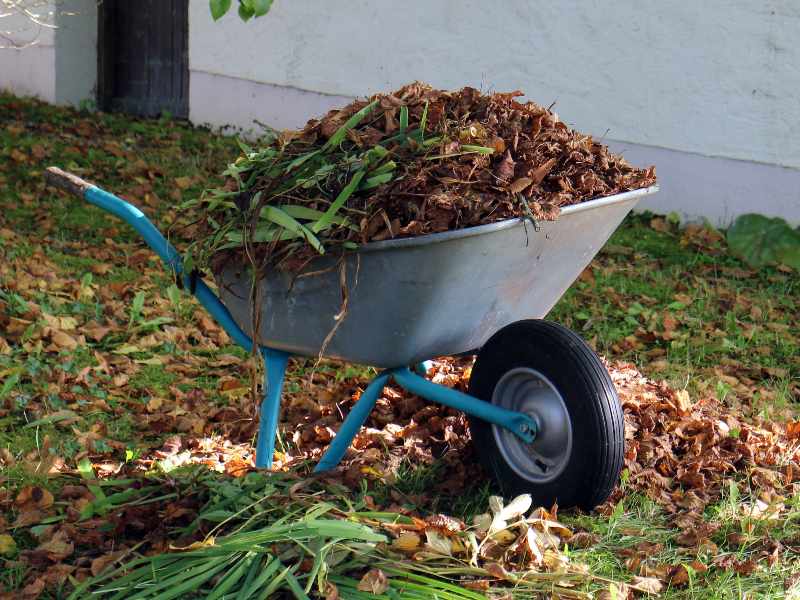
During the winter, it’s likely that leaves, branches, and other debris have accumulated on your lawn. It’s important to clean up this debris before you mow your lawn so that you can cut it evenly and prevent damage to your mower. You can follow these steps to clean up your yard:
- Pick up all debris like branches and twigs
- Rake leaves once you’re sure that all snow has melted and your grass is dry
- Prune and trim your trees, shrubs, and hedges
- Clear your garden beds of all leaves, weeds, dead foliage, and fallen limbs
- Pressure wash your patio, deck, walkways, siding, and driveway after pollen season (normally between late April and early May)
Tip: You don’t have to discard picked-up debris, like leaves. Instead, you may be able to turn it into a nutrient-rich compost. Moreover, some of the twigs you’ve picked up could be used for DIY projects.
3. Test Your Soil
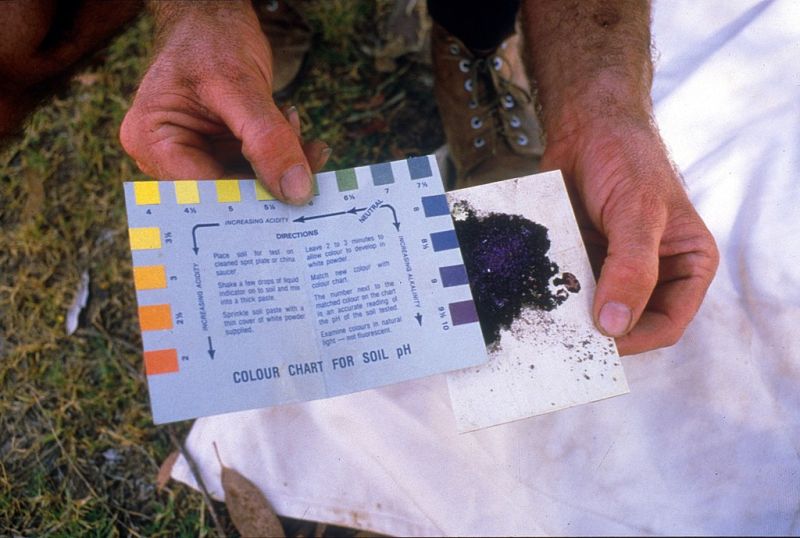
Photo Credit: CSIRO / Wikimedia Commons / CC BY 3.0
Winter can take a toll on your soil, so when spring rolls around, your grass may need additional nutrients like phosphorus, lime, and magnesium. A test can help you find out if your soil is lacking in any essential nutrients.
Another reason you should test your soil is to determine its pH level. Your soil’s pH level can tell you how well it can absorb nutrients. Each turf grass has different pH level needs, but most of them grow in soils with a pH between 5.0 and 7.0.
According to North Carolina State University, you should do a soil test every two to three years. You can test your soil by using a home testing kit or by sending a sample to a lab. If you choose the latter, North Carolina State University accepts samples between April 1 and early November each year. At other times of the year, you’ll need to submit your soil samples to Raleigh.
It’s best to do a soil test before you fertilize your lawn so that you know which nutrients it lacks.
4. Prevent Lawn Diseases
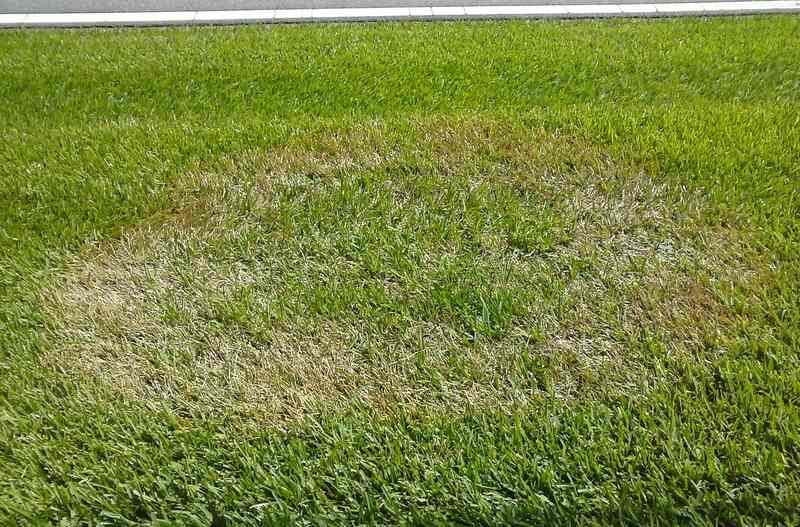
Photo Credit: Scot Nelson / Wikimedia Commons / CC0
As spring approaches, temperature and humidity increase. That’s great for your lawn’s growth, but it also creates the perfect environment for lawn diseases to thrive.
Here are just a few of the common North Carolina lawn diseases:
The best way to deal with lawn diseases is to prevent them. You can avoid many lawn diseases by:
- Choosing a disease-resistant grass type
- Proper watering (before 10 a.m.)
- Mowing at the proper height
- Applying the right fertilizer
- Aeration
- Dethatching
- Fungicides
Your lawn will be more susceptible to diseases if you’re dealing with any of the following:
- Excessive moisture
- Heavy dew
- Infertile soil
- Damaged lawn
- Thatch build-up
- Non-resistant grass types
- Wet weather
- Night temperatures over 50 degrees
Always look for signs of disease and treat them right away.
5. Prevent and Treat Weeds
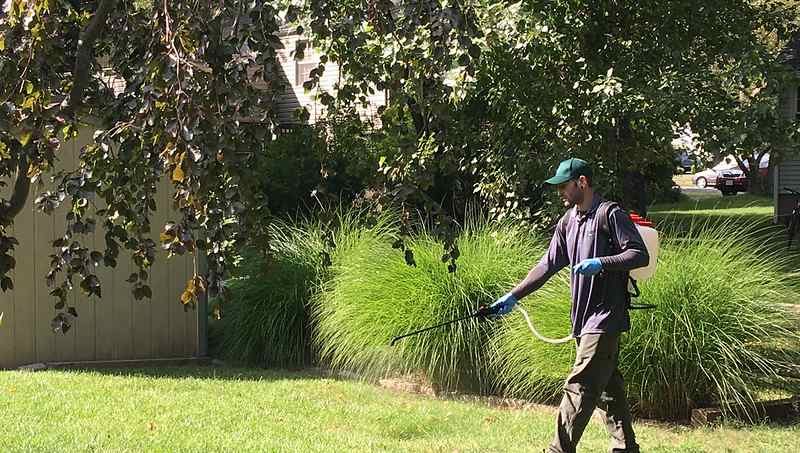
Photo Credit: Praxis Eco Pest Control / Flickr / CC BY 2.0
Weeds can quickly take over a lawn and compete with grass for nutrients and water. A few common weeds include:
- Yellow nutsedge
- White clover
- Henbit
- Common chickweed
- Mouseear chickweed
- Large crabgrass
- Smooth crabgrass
To prevent weeds from sprouting, you can treat and prevent them with herbicides. There are different kinds of herbicides, so make sure you pick the right ones and apply them correctly.
Pre-emergent herbicides are applied before weeds emerge, which should be around March 15. It puts a chemical barrier on the surface of the soil to stop weeds from growing. It’s normally in effect for three to five months.
Post-emergent herbicides are applied later in the spring, when the weeds have already emerged.
Herbicides are further categorized as either selective or non-selective. A selective herbicide targets specific weeds, whereas a non-selective herbicide is stronger and can kill any plant. Be careful if you use a non-selective herbicide because it may kill plants that you want to keep.
Furthermore, you should never use any herbicide on newly seeded areas. It should also be applied at least three or four days before mowing or at least two to three days after. After application, wait 24 hours before you irrigate.
If you prefer the organic route, you can look into organic herbicides. Properly caring for your lawn by watering, mowing, fertilizing, aerating, and so forth can also make your lawn stronger and more weed-resistant.
6. Aerate Your Lawn
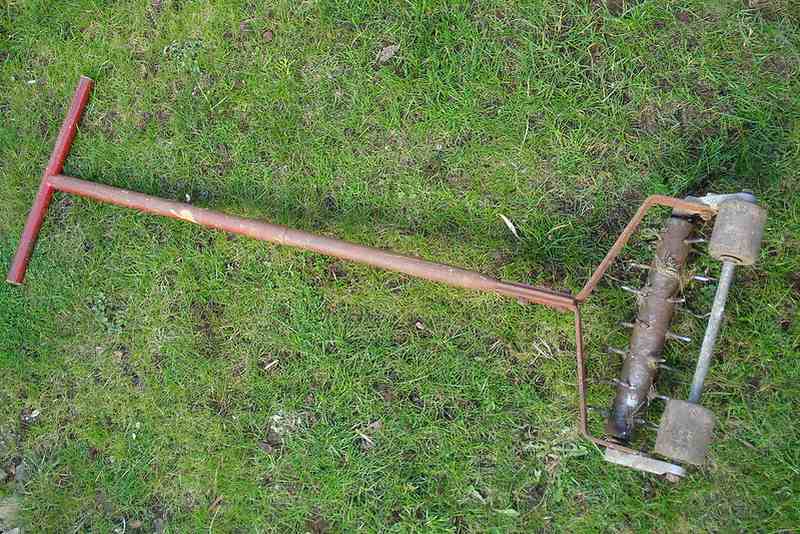
Photo Credit: allispossible.org.uk / Flickr / CC BY 2.0
Your soil may become compacted after a cold winter. To prevent your grass from suffering and even dying as a result, it’s important to aerate your lawn. This process involves creating small holes in the soil to allow air, water, and nutrients to penetrate deeply into the roots of your grass.
Before you aerate, consider your grass type. If you have a warm-season grass type, aerate it in late spring so that it can grow. The best time to aerate a cool-season grass type is in the fall. Following aeration, fertilization and seeding should come next (you can do either of them first). You can buy tools to aerate your lawn or contact a Durham professional.
7. Fertilize, But Avoid Overfertilizing
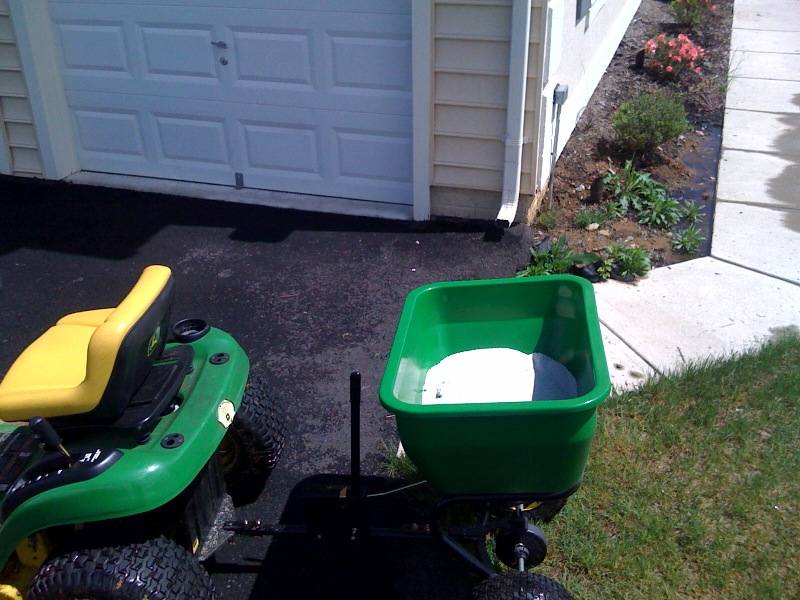
The right amount of fertilizer depends on the type of grass you have and the condition of your soil. As mentioned above, overfertilizing can make your lawn more susceptible to diseases. While this is especially the case for centipedegrass, it’s nevertheless important to follow the recommended guidelines for fertilizing and not exceed them.
As mentioned above, your soil test will reveal what your soil is lacking.
Fertilizers mainly consist of three nutrients: nitrogen, phosphorus, and potassium. These nutrients are abbreviated as N-P-K. If you buy a 24-6-6 fertilizer, it means that it’s made of 24% nitrogen, 6% phosphorus, and 6% potassium.
Ideal fertilization times depend on whether you have a warm-season or a cool-season grass type. You can learn about different Durham grass types to find out if you have a warm- or cool-season grass type. Either way, remember that you should fertilize your grass right after you aerate, if possible. You can overseed before or after you fertilize.
But back to warm- and cool-season grasses’ fertilization needs. According to North Carolina State University, warm-season grasses don’t need fertilizer until about two weeks after they’ve started to green up. Cool-season grasses, on the other hand, should be fertilized in the fall. If you missed the recommended fertilization window, you should fertilize your cool-season grass early in the spring.
Here are the recommended fertilization times for typical Durham grass types:
| Grass Type | Recommended Fertilization |
| Bermudagrass | Early April to May |
| Centipedegrass | June |
| Kentucky bluegrass mix | Mid September to November |
| Tall fescue | Mid September to November |
| Zoysiagrass | June to August |
8. Overseed Bare Spots
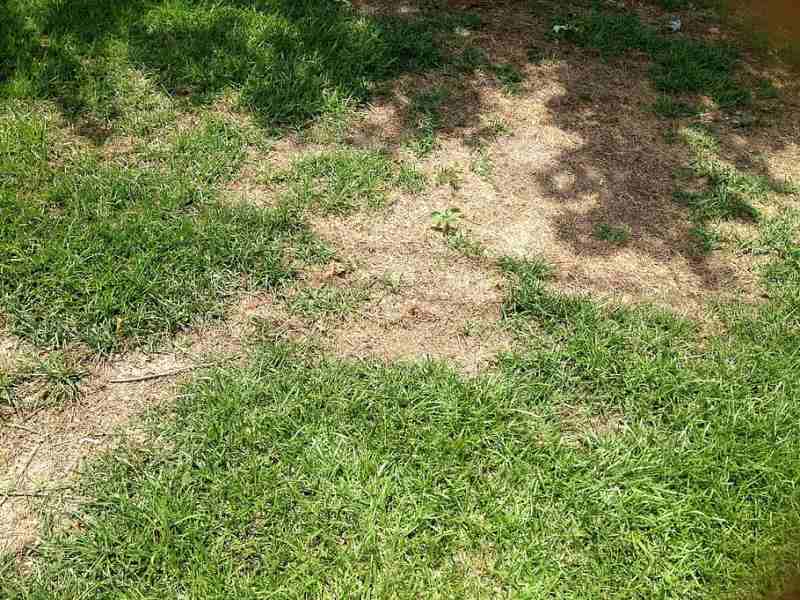
Photo Credit: Wallpaperflare
If your lawn has bare patches, you need to overseed them to promote healthy growth. Overseeding should follow core aeration and can be done before or after fertilization. Just like other maintenance practices, the best time to overseed depends on your grass type.
If you have a warm-season grass type, it’s best if you overseed it in late spring to early summer. Warm-season grasses’ optimal planting temperatures vary based on the type of grass. But broadly speaking, they begin to grow at temperatures between 60 and 65 degrees Fahrenheit and do best at 90 to 95 degrees Fahrenheit.
If you have a cool-season grass type, you should overseed it in late summer to early fall. Just like warm-season grasses, cool-season grasses’ optimal planting temperatures vary based on the type of grass. But generally, they begin to grow at temperatures between 40 and 45 degrees Fahrenheit and do best at 65 to 75 degrees Fahrenheit.
If you leave overseeding too early or too late, you risk the new grass not establishing well. Check out the best grass types for Durham if you want to know more about warm-season and cool-season grasses.
Once you plant your new seed, don’t forget to fertilize it if you haven’t already. Additionally, water your new grass seed regularly to ensure that it gets enough moisture for proper growth.
9. Don’t Mow Too Long or Too Short
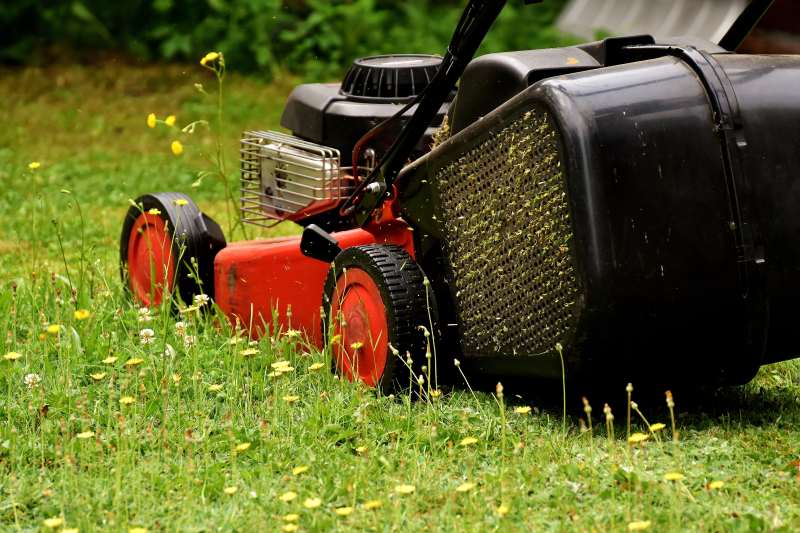
Photo Credit: Wallpaperflare
A healthy, lush lawn requires proper mowing. Avoid mowing your grass too short, as it can damage it and affect its growth. Cut no more than one-third of the grass blade in one mow, and don’t mow wet grass. Also, don’t mow for 2 to 3 days before or 3 to 4 days after applying herbicide.
However, be sure not to let your grass grow too long because it can become susceptible to diseases and pests. How much you’ll need to do depends on your grass type.
Here are the recommended mowing heights for Durham grasses:
| Grass Type | Recommended Mowing Height |
| Bermudagrass | 1 to 2 inches (rotary mower) or 0.75 to 1 inch (reel mower) |
| Centipedegrass | 1.5 to 2 inches, depending on conditions |
| Kentucky bluegrass mix | Depends on the mix; anywhere from 1.5 to 3.5 inches |
| Tall fescue | 2 to 4 inches |
| Zoysiagrass | Typically 1.5 to 2.5 inches depending on cultivar and shade; heights below 1 inch need a reel mower (which is recommended anyway) |
Tip: Once you’ve mowed your grass, you can leave grass clippings behind as natural fertilizer. But make sure that the clippings are not too long or too thick, because this will create too much thatch.
10. Prevent Insect Pests
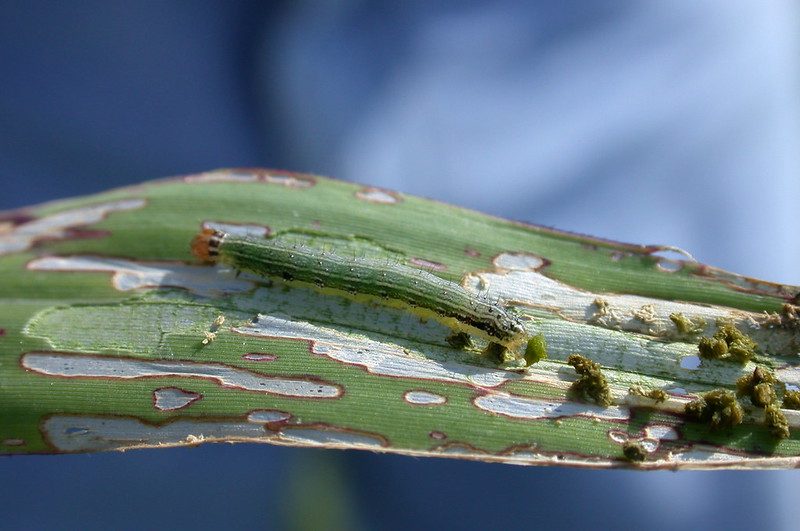
Photo Credit: uacescomm / Flickr / CC0 1.0
Like weeds, insects can threaten the health and appearance of your lawn. Common Durham pests include:
- Ticks
- Grubs
- Sod webworms
- Cutworms
- Aphids
- Spittlebugs
- Chinch bugs
- Ants
To prevent pests, make sure to keep your grass healthy by providing it with enough water and fertilizer. Moreover, mow, aerate, and dethatch as needed.
If your lawn becomes infested with pests, use selective pesticides that kill only a certain kind of insect pests. Otherwise, you risk killing beneficial insects that prey on pests. You can also consider using natural pest control methods or seeking professional help if necessary.
11. Water Enough But Not Too Much
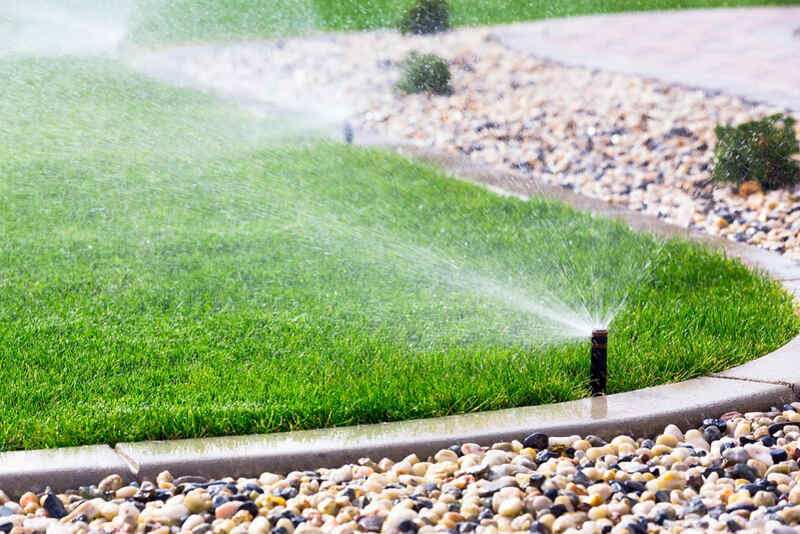
Photo Credit: Aqua Mechanical / Flickr / CC BY 2.0
Your lawn needs sufficient watering, but overwatering can damage it and lead to diseases and pests.
The amount of water your lawn needs depends on its type and weather conditions. Generally speaking, though, most grass types need around 1 to 1.5 inches of water per week. You should water your lawn to a depth of 6 to 8 inches.
Here are a few tips for watering your lawn:
- Water in the early morning: the best time to water your lawn is between 4 and 8 a.m. Always water before 10 a.m. If you can’t water in the morning, avoid watering at night, because this can cause fungal diseases and mildew. Instead, try to water between 4 p.m. and 7 p.m.
- Measure rainwater: You can use an empty can or a rain gauge to measure the amount of rain your lawn has received. Then, you can water accordingly.
- Water more, less often: Don’t give your lawn an entire inch of water in one watering. Generally, it’s effective to water every 3 to 4 days and give your lawn half an inch each time. If there’s been rain, you should water less.
Keep Your Durham Lawn Beautiful Throughout the Year
Partly, the lawn care you have to do will depend on the type of grass you have in your lawn. For the best care throughout the year, it’s important to know what kind of grass you have and what it needs.
If you want to add plants to your lawn, you can consider native plants. Natives need less care than non-natives and are beneficial to local ecosystems. Once again, make sure you choose plants that suit your specific needs and preferences.
Spring lawn care is just the beginning. If you’d rather enjoy the beauty of your lawn without the hassle of maintenance, you can also consider hiring a professional lawn care service to take care of it for you.
Main Photo Credit: Greystone Mansion / Warren LeMay / Wikimedia Commons / CC BY-SA 4.0